1. Smart Shopping Carts with AI Assistance

Smart carts equipped with AI help shoppers navigate stores and track purchases in real-time. TechCrunch highlights that these carts are designed to streamline shopping and reduce checkout times. These carts can guide shoppers through stores, recommend efficient routes, and keep track of items added to the cart in real time. This innovation reduces the need for traditional checkouts, streamlining the shopping experience.
Many carts are equipped with digital screens that display item information, pricing, and even personalized offers. By using AI, stores can also gather valuable insights into customer behavior to improve inventory management and layout design. A notable example is the Veeve smart cart, which is gaining popularity for its ability to combine convenience and efficiency. TechCrunch highlights how these advanced carts are reshaping the retail landscape and reducing shopping times for busy customers. With their ability to integrate seamlessly with loyalty programs, smart carts are setting a new standard in retail technology.
2. Checkout-Free Stores
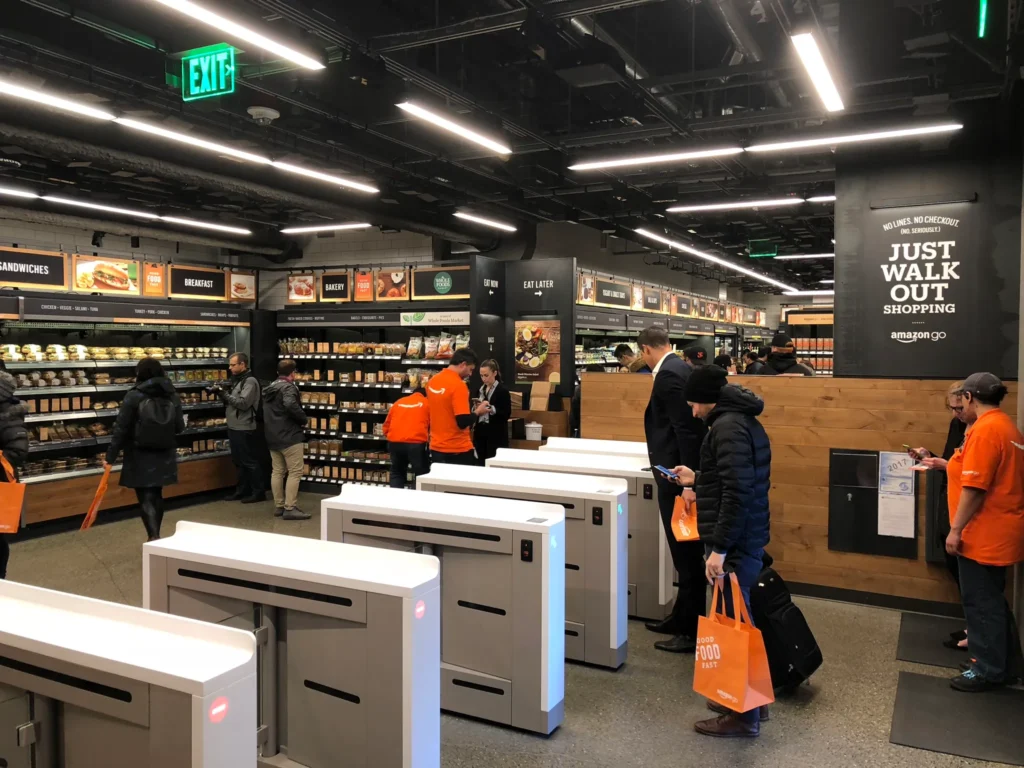
Stores like Amazon Go are pioneering cashier-less shopping, where sensors and cameras track purchases automatically. Checkout-free stores are redefining convenience shopping with cutting-edge technology. These stores, such as Amazon Go, use an array of sensors and cameras to track customer purchases automatically. Shoppers can simply walk in, pick up their desired items, and leave without waiting in line. Payment is processed through a linked account, eliminating the need for cashiers or self-checkout kiosks.
This innovation reduces wait times and creates a seamless experience that appeals to busy professionals and tech-savvy customers. Checkout-free systems are also providing retailers with precise insights into shopping habits and inventory levels. The Verge notes that this technology eliminates lines and allows for a seamless shopping experience. As more retailers adopt this model, the era of the traditional checkout may soon become a thing of the past.
3. Vertical Farms Inside Stores
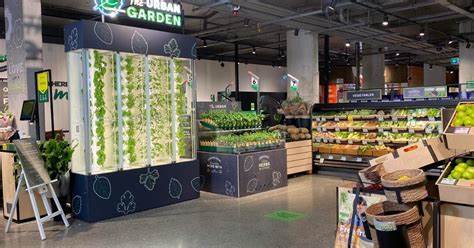
Vertical farming is bringing the concept of farm-to-table closer than ever by growing fresh produce directly within grocery stores. These vertical farms use hydroponic systems and LED lighting to cultivate fruits and vegetables in compact, controlled environments. Customers can purchase lettuce, herbs, and other greens harvested just minutes before hitting the shelves, ensuring unmatched freshness and nutrition.
This approach reduces transportation costs, carbon emissions, and reliance on traditional supply chains. It also enables stores to operate more sustainably while meeting the growing demand for local, pesticide-free food. CNN reports this trend is part of a push toward hyper-local and sustainable food production. As more retailers incorporate vertical farming, the future of grocery shopping looks greener than ever.
4. Subscription-Based Grocery Memberships
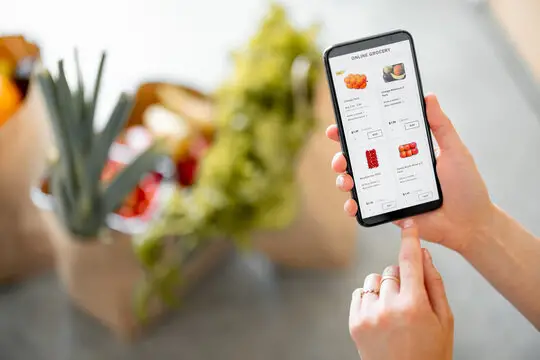
Subscription-based memberships are transforming how customers interact with grocery chains. These services often provide exclusive benefits such as free delivery, discounts on products, and early access to new items. By offering such perks, retailers can strengthen customer loyalty and create a consistent revenue stream.
For example, Walmart+ has gained significant traction for its combination of grocery delivery and additional services like fuel discounts. This model is particularly appealing in an age of convenience-driven shopping, where consumers are willing to pay for time-saving benefits. Business Insider explains that these memberships aim to lock in customer loyalty. As this trend grows, customers are likely to see even more tailored memberships that cater to specific shopping needs.
5. Customizable Meal Stations
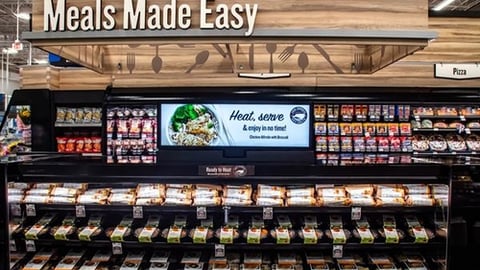
Customizable meal stations are blurring the lines between dining and grocery shopping. These stations allow customers to create personalized meals using fresh ingredients and recipes available in-store. For busy shoppers, this feature offers the convenience of a ready-to-eat meal while providing the freshness of homemade dishes. Many stores are integrating interactive kiosks where customers can select meal options, customize flavors, and even watch their food being prepared.
Food & Wine highlights this trend as a way for stores to compete with meal delivery services. The trend encourages creativity and experimentation, making meal planning more exciting. Also according to Food & Wine, these stations are becoming a cornerstone of modern grocery shopping as they appeal to both food enthusiasts and convenience seekers.
6. AI-Powered Recipe Recommendations

AI-powered recipe recommendations are transforming how customers interact with grocery stores. Using in-store kiosks or mobile apps, these systems suggest recipes based on the items a shopper adds to their cart. For example, if you buy chicken, garlic, and parsley, the AI might recommend a recipe for garlic herb chicken. This technology encourages customers to try new ingredients and simplifies meal planning, reducing the stress of grocery shopping.
Stores benefit from this by increasing sales of complementary items often featured in recipes. In addition, the systems can offer step-by-step instructions, enhancing the overall shopping experience. Wired says this innovation encourages shoppers to try new ingredients and meal ideas.
7. Biometric Payments
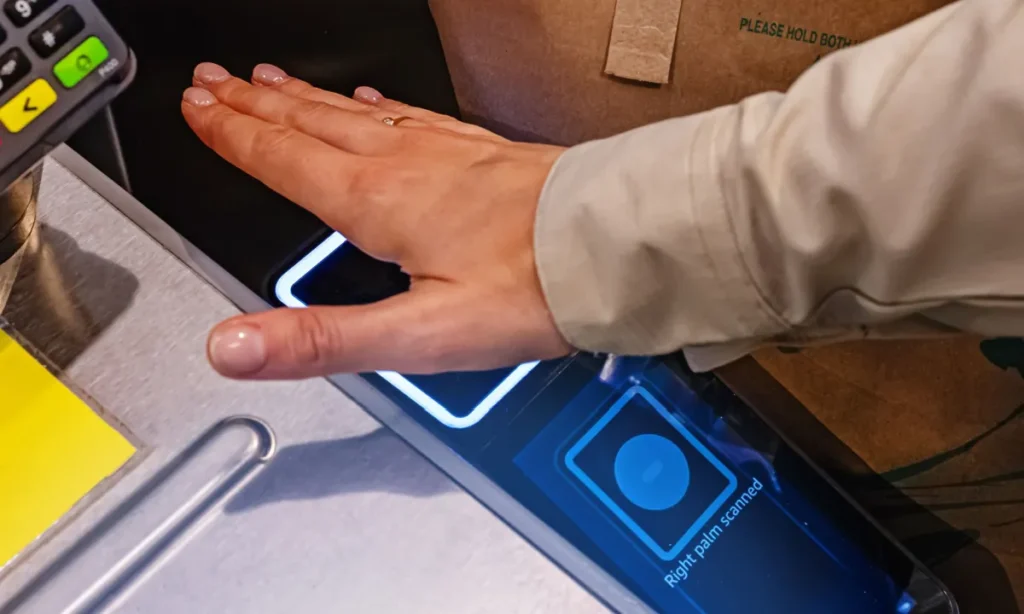
Biometric payment systems are ushering in a new era of convenience and security in grocery shopping. By using unique physical identifiers like fingerprints, facial recognition, or palm scanning, customers can complete transactions faster than ever. This method eliminates the need for cash, cards, or even smartphones, making it particularly appealing to tech-savvy shoppers.
Biometric systems are also praised for their heightened security, as they reduce the risk of fraud or identity theft. Many retailers are adopting this technology to streamline checkout processes and enhance the customer experience. Forbes reports this technology is gaining traction for its convenience and security features.
8. Reduced Aisles for ‘Scan-and-Go’ Models
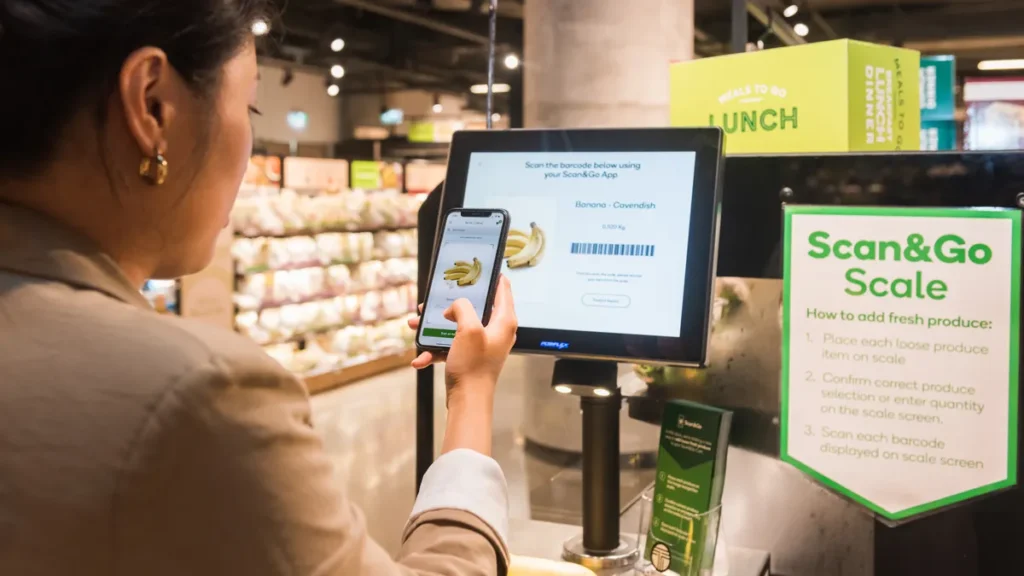
The shift toward “scan-and-go” models has led many grocery stores to reduce traditional aisle spaces in favor of grab-and-go sections. These sections feature pre-packaged items, meal kits, and essentials that customers can quickly pick up and purchase. By prioritizing speed and convenience, this layout caters to shoppers who are short on time.
Additionally, the streamlined format allows stores to optimize space and showcase high-demand products. Retailers using this model often integrate mobile apps or handheld scanners, enabling customers to scan items as they shop and skip the checkout line entirely. Retail Dive points out that this format caters to time-strapped shoppers.
9. Hyper-Personalized Discounts
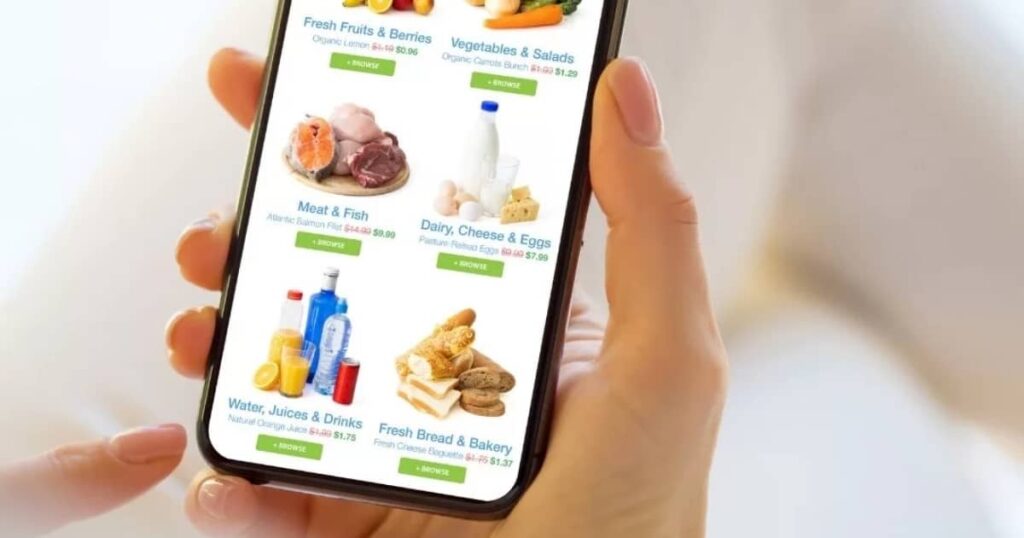
Hyper-personalized discounts are revolutionizing loyalty programs by tailoring offers to individual shopping habits. By analyzing purchase history, stores can provide unique discounts that resonate with each customer. For example, a shopper who frequently buys organic produce might receive coupons for organic brands.
This strategy not only boosts customer satisfaction but also fosters loyalty by making shoppers feel valued. It’s also an effective way for retailers to increase sales and clear specific inventory. As The Wall Street Journal notes, hyper-personalized discounts are a win-win for both customers and retailers, enhancing the overall shopping experience while driving profits. The Wall Street Journal also notes this as a strategic move to enhance customer retention.
10. Food Waste Repurposing
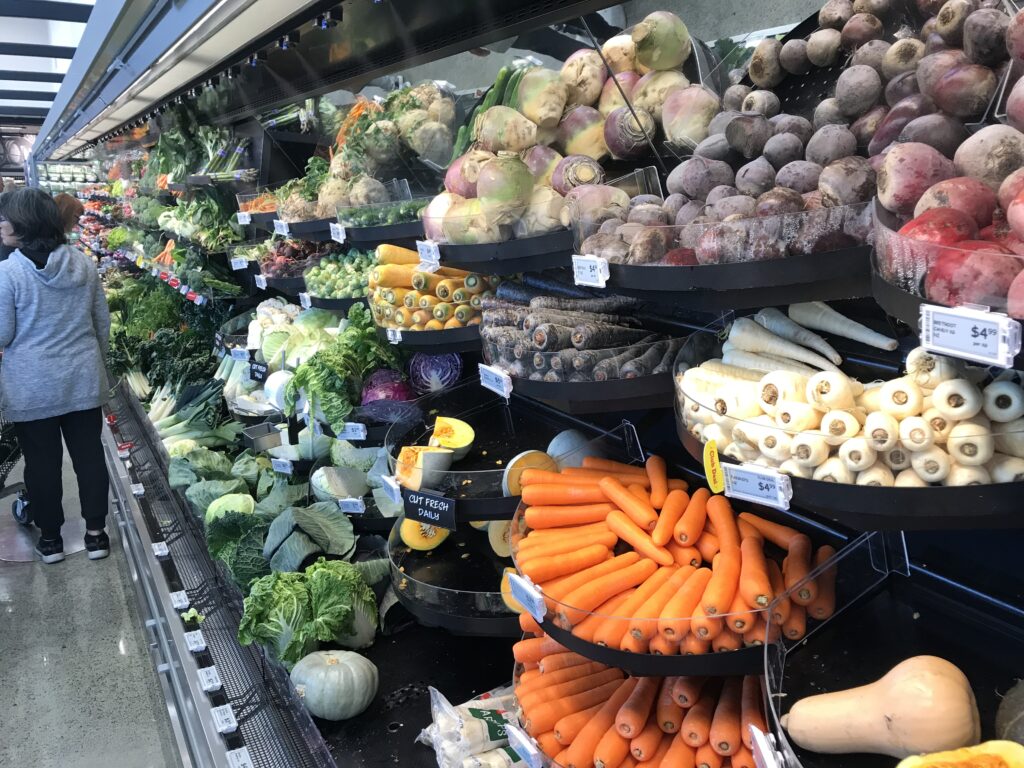
Many grocery stores are tackling food waste by repurposing near-expiry or unsold items into ready-to-eat products like soups, smoothies, and baked goods. This approach reduces waste while generating additional revenue from items that might otherwise be discarded. Customers benefit by accessing fresh, affordable meals while supporting sustainable practices.
Some stores even highlight these initiatives in their marketing, appealing to environmentally conscious shoppers. This practice aligns with broader efforts to minimize the environmental impact of food waste. The Guardian highlights this as a way to combat food waste while maximizing profits.
11. Robot Stockers and Cleaners
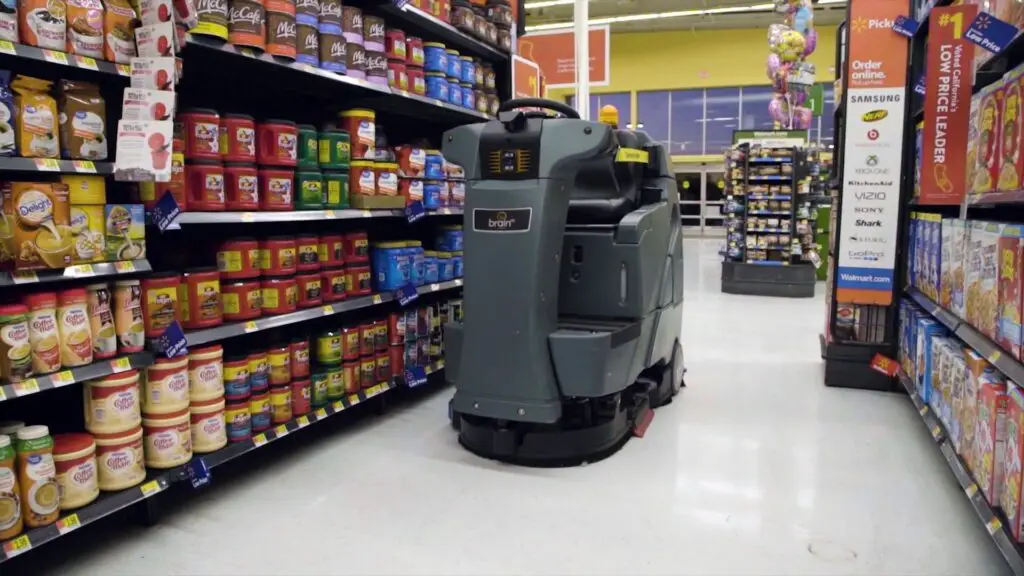
Robots are increasingly being deployed in grocery stores to handle tasks like restocking shelves and cleaning floors. These machines help streamline operations, reduce labor costs, and ensure consistently clean and well-stocked environments. Some robots are even equipped with sensors to detect spills or low inventory levels, addressing issues in real time.
The use of robotics also allows human employees to focus on customer-facing roles, enhancing the overall shopping experience. As the technology becomes more advanced, robots are expected to take on even more responsibilities within stores. Reuters emphasizes that this shift is aimed at improving efficiency and reducing operational costs.
12. Grocery Stores with Co-Working Spaces

The integration of co-working spaces within grocery stores is transforming them into multifunctional community hubs. These spaces offer professionals a convenient location to work, meet clients, and shop all in one visit. Many co-working areas feature Wi-Fi, comfortable seating, and even access to refreshments, blending productivity with convenience.
This innovation reflects the increasing demand for flexible workspaces as remote work becomes more common. Additionally, these spaces foster a sense of community by encouraging social interactions in a retail setting. Fast Company calls this innovation a blend of convenience and community.
13. Expanded Non-Food Sections
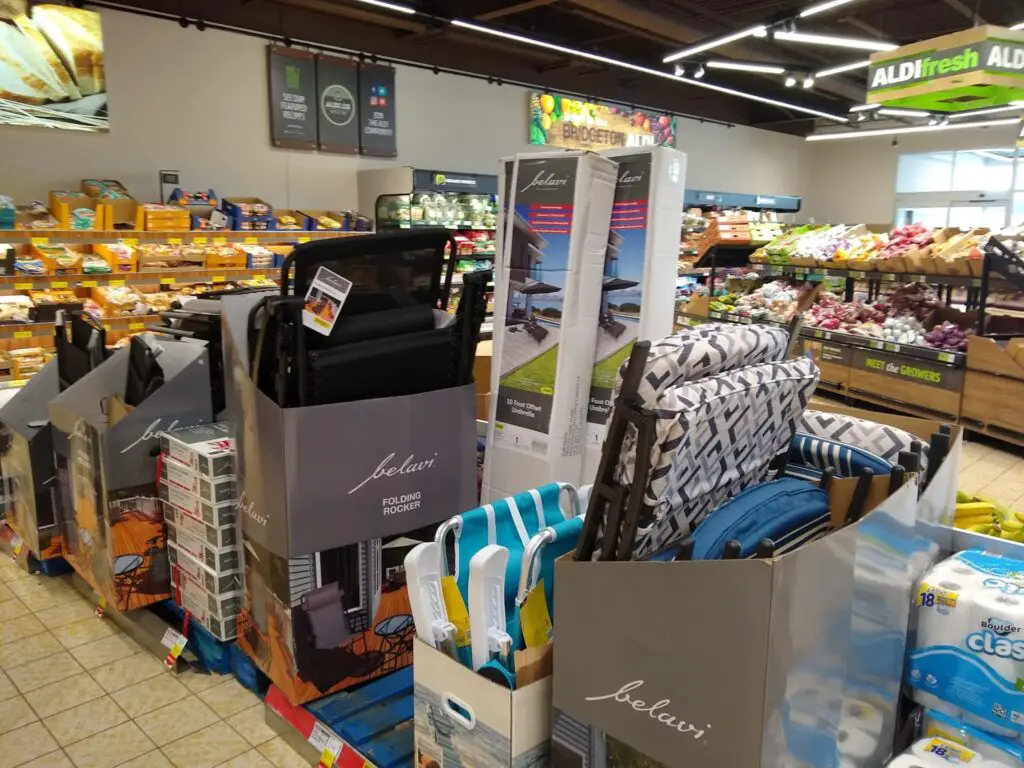
Grocery stores are dedicating more space to non-food items like home goods, electronics, and clothing to compete with big-box retailers. This shift allows customers to complete multiple errands in a single trip, increasing convenience and boosting store revenue. By diversifying their product offerings, grocery stores are positioning themselves as one-stop shops for busy consumers.
These expanded sections often include curated items designed to appeal to specific demographics, such as eco-friendly home products or trendy apparel. NPR reports that this strategy diversifies revenue streams while catering to one-stop-shop demand.
14. AR Shopping Experiences
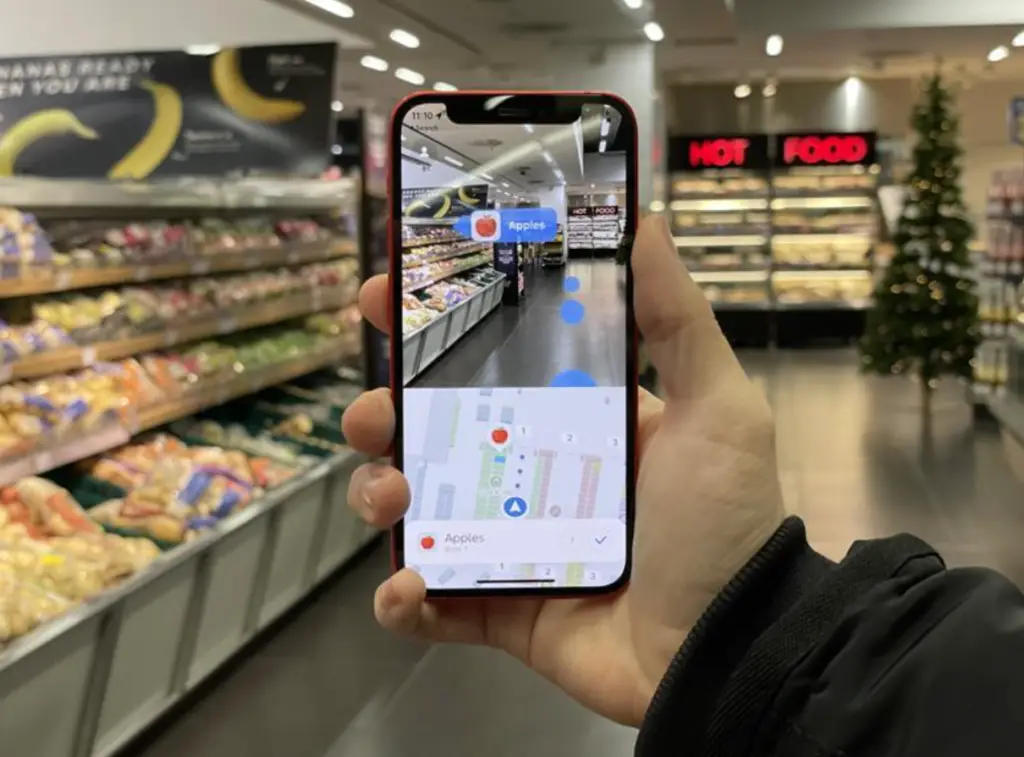
Augmented reality (AR) is enhancing the grocery shopping experience by offering interactive features like virtual tours, meal visualizations, and nutrition guides. Shoppers can use AR apps to see how a dish will look when prepared or learn more about the origins of a product.
This technology also allows retailers to engage customers in immersive ways, such as virtual scavenger hunts or personalized shopping guides. By combining entertainment and practicality, AR is making grocery shopping more engaging and informative. CNET suggests AR as the next frontier for immersive grocery shopping experiences.
